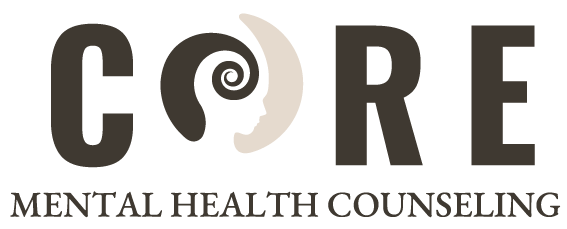Prior to moving into private practice therapy, I worked in addiction treatment for a good portion of my career. When I introduced myself to people, and discussed what I did professionally, they often disclosed that either they, their family member, or a close friend dealt with addiction. Addiction impacts the individual in a profound way, which we will review in this article. However, for one individual affected by this disease, there are several others around them who are being impacted. The good news is that people and families recover. The first step in change is identification and acknowledgement. See if you can picture yourself or your family in the following writing.
The ripple effect of addiction, can be seen over multiple generations. You may be walking around with intergenerational effects of someone else’s addiction and not be aware. Not all addictive tendencies express themselves through substance abuse. Often addiction starts with an abusable and/or pleasurable substance or behavior. However, even long after the substance is removed it can continue to plague the individual and family. As they say in the rooms of recovery “once you are a pickle, you can’t go back to being a cucumber”. This article is all about how addiction presents within the family system.
Addiction is commonly referred to as a disease. I think of it more like a parasite that attaches to its host. It begins to influence and change the person’s thoughts and behaviors. Addiction even begins to influence and change the people around it. It seeps into the family system, one secret, one lie, and one thought at a time. Addiction is described by some, as having three parts: a mental obsession, physical compulsion, and spiritual bankruptcy. The addicted person’s obsession and compulsion is the substance and ways to get the substance. The family member’s (spouse, parent, sibling, or child) obsession and compulsion is often times the addict/alcoholic and ways to get (control) them. At that point, addiction has spread to all of the members of the home, not just the substance abuser.
The mental obsession for most addicts, can be traced back to early years with hockey cards, dating, or drawing marijuana leaves on their agendas. The mental preoccupation for individuals prone to addiction, starts slow at first. As it progresses it becomes an all-consuming fixation on the substance. How can I get it? When can I use it? I’ll stop tomorrow. This will be my last time.
The same symptom occurs to the person affected by someone else’s addiction. They become preoccupied with the addicted individual. Where are they going? Will they be safe? When will they be home? There are often games played and scores kept, in order to control their loved one. Have you ever thought any of those thoughts about your loved one? Do you believe that you can control another person’s behavior?
The mental obsession is fueled by a physical compulsion. Compulsion is described as the feeling of anxiety, despair, and dread to get the substance. It is the itch that you must scratch. The brain begins to believe that “I will not be OK unless I have it”. The same belief takes place in the family member. I have heard countless stories of children waiting on the steps for their alcoholic father to come home, mothers with sleepless nights, and spouse’s not feeling okay until they know he or she is alright. The compulsion is like unrestful music playing in the background and not allowing the person to ever let go or surrender. Do you feel anxious? Do you only feel relieved as a result of someone else’s behavior?
Spiritual bankruptcy can be defined as a life without direction, purpose, or meaning. The overall feeling is one of emptiness. What once brought the person joy; like hobbies, sports, dance, friends and family, are all replaced with confusion, chaos and broken the promises of addiction. Some would call it a secondhand life. A person who gets lost in someone else’s addiction, begins to lose their identity and direction in life, they forget about their own needs, passions, and goals, stop taking care of themselves, and begin to live their own secondhand life. They are left feeling resentful, exhausted, and powerless. Do you feel aimless? Do you feel like you are constantly caring for others?
The reason we review these 3 components to addiction in the family is that acknowledging these patters can be the first step of changing them. Additionally, to determine the intergenerational impact of addiction. Is someone’s past addiction impacting how you think in current relationships? Maybe this pattern of thinking and feeling influences the partners you choose? Are you dealing with difficult relationship patterns and struggles? When we make a change in the present, it doesn’t change the past, but it does change the way our past influences our future.
So, what’s next? Try tapping into your resources; friends, family, a counselor. Addiction grows stronger in a closed system; break the silence, tell someone and get some feedback. Utilize some of your self-care techniques again, put your needs first sometimes, and set healthy boundaries. Ask yourself “if I was not thinking about them, what would I be thinking about or what would I be doing? Try out an Al-Anon meeting, support group or seek out professional help. It is very common for family members to seek out the support of a therapist as a result of someone’s addiction. Small steps lead to big changes and above all, remember that there is hope!


